For work with Hierarchy Relations some core principles apply:
Inheritance when adding a relation
The main principle in the maintenance of Hierarchy Relations is Inheritance. Inheritance means that it is not necessary to create relations between all nodes - instead, we create a relation on the highest node combination and all child nodes will inherit this relation.
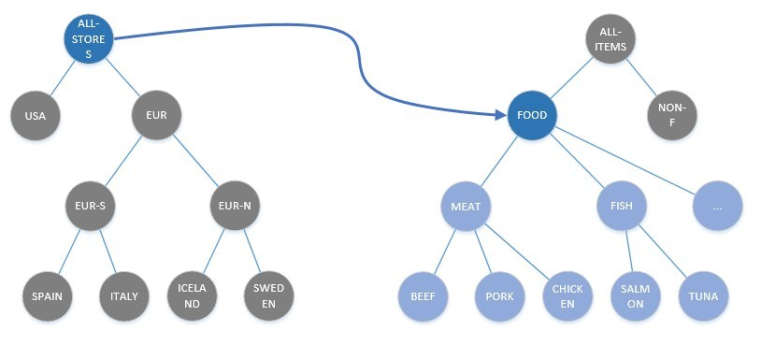
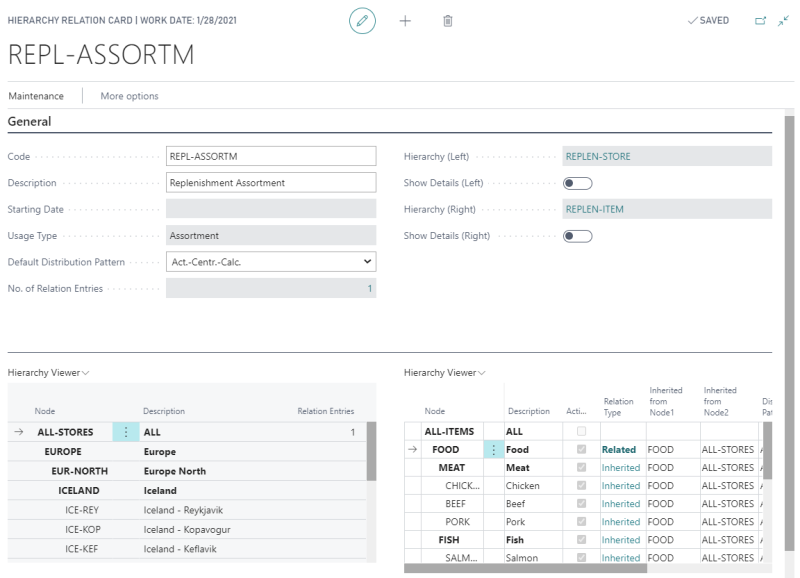
In the above example a Relation between the Nodes ALL-STORES and FOOD exists. The Node FOOD has child Nodes MEAT, FISH, and DAIRY, which have further child Nodes like CHICKEN, BEEF, and so on. The child Nodes and their child Nodes will inherit the Relation settings of their parent Nodes.
Please note the Relation Type field in the Hierarchy Viewer. The value Related indicates that there is an existing Relation. The value Inherited indicates that the current Node received its setting from a parent Relation. The parent Relation can be identified with the Inherited from Node1 and Inherited from Node2 fields.
The Active field indicates the Relation status of the Relation between the selected Nodes. If this field is enabled a Relation exists and this Relation will be considered for Replenishment or other functionalities. If this field is disabled, either no Relation was created yet or an Exclude Relation is active.
Whenever a new Relation (Active or Excluded) is added to the Hierarchy Relations, all child Nodes will inherit this setting. There could be a situation where a child Node already has a Relation in place.
The example below shows an existing Relation between the Nodes EUR and MEAT.
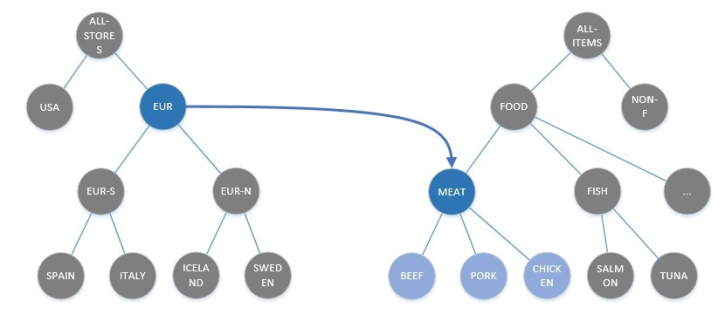
When you add a new Relation between the Nodes EUR and FOOD, the inheritance rule steps in. The new Relation between the Nodes is created and all child Nodes will inherit this setting.
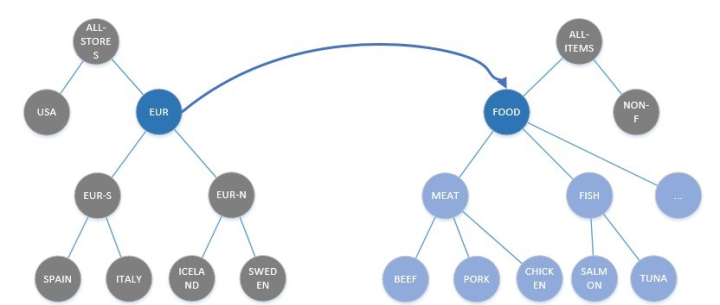
The newly created relation between the nodes EUR and FOOD overwrites the relation between the nodes EUR and MEAT because of top-down inheritance.
There might be situations, when you want to preserve previously created child relations. When you create a new relation and the system recognizes an existing child relation, it will ask you if you want to overwrite or preserve the child's relation.
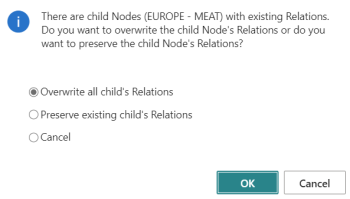
The option Overwrite all child's Relations will create the previously shown result.
The option Preserve existing child's Relations will create the result shown below.
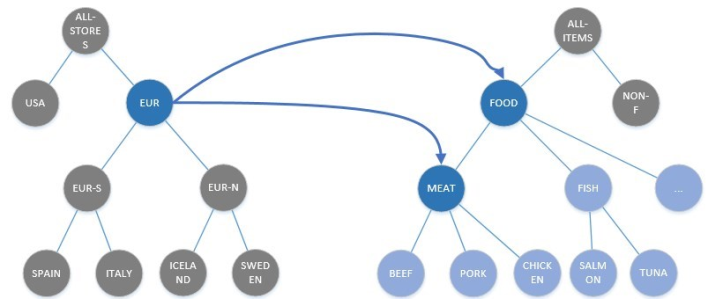

Inheritance when removing a relation
The main principle in the maintenance of Hierarchy Relations is Inheritance. Inheritance, when removing a relation, means that:
- the relation between the nodes is removed.
- if the selected nodes have parent nodes, the settings of the parent nodes will be inherited to the selected nodes.
- if the selected nodes have child nodes, these child nodes (and their child nodes) will inherit the settings from the parent nodes.
There are two functions that can be used to remove a relation:
- Remove relation
- Remove relation (preserve child relations).
The example below shows relations between the nodes EUR and FOOD and also between the nodes EUR and MEAT.

Remove relation
If the relation between the nodes EUR and FOOD is removed with the Remove Relation function, the system will check, if there is a parent relation for the nodes EUR and FOOD. As there is no relation between EUR and ALL-ITEMS this status will be inherited to the selected nodes and the child nodes leading to this result:
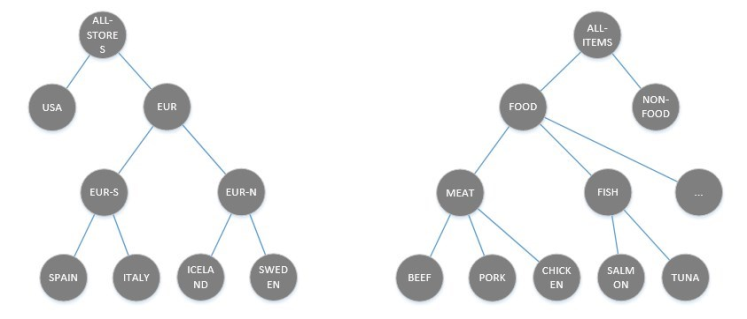
As a result, both relations and all child relations are removed.
Remove relation (preserve child relations)
If the relation between the nodes EUR and FOOD is removed with the Remove Relation (preserve child relations) function, the system will check, if there is a parent relation for the nodes EUR and FOOD. As there is no relation between the nodes EUR and ALL-ITEMS this status will be inherited to the selected nodes and the child nodes leading to the following result:
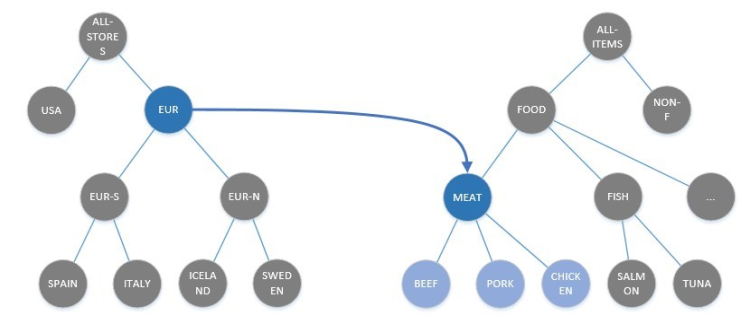
As a result, the rlation between the nodes EUR and FOOD and all child relations are removed. This affects the child nodes FISH, SALMON, TUNA, and so on.
The relation between the nodes EUR and MEAT is preserved and all child relations of the nodes EUR and MEAT keep their original settings.
Mirroring
A relation can be seen from two sides: a relation between the nodes ALL-STORES and FOOD is at the same time a relation between the nodes FOOD and ALL-STORES.
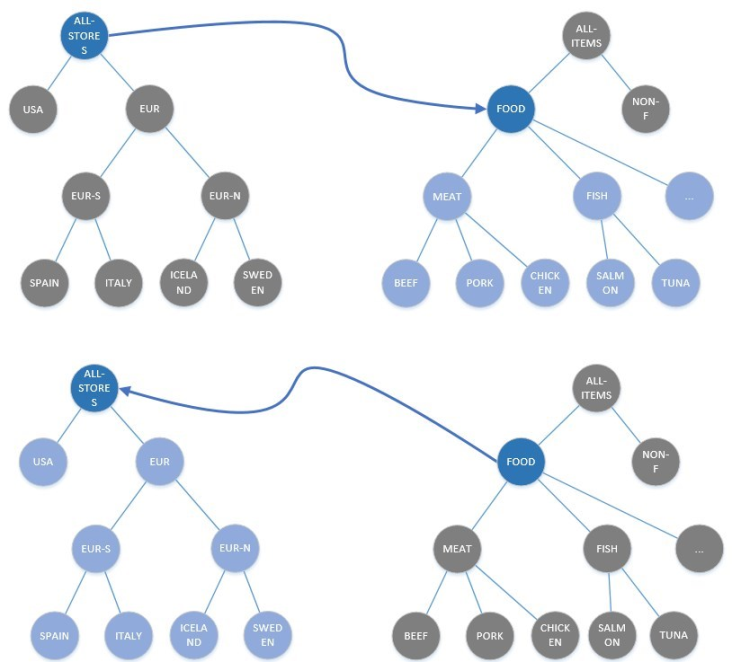
The Replenishment Hierarchy page lets you switch between both views with a single click and lets you work with focus either on Item or Store.
To learn more about the Switch functionality, click here.